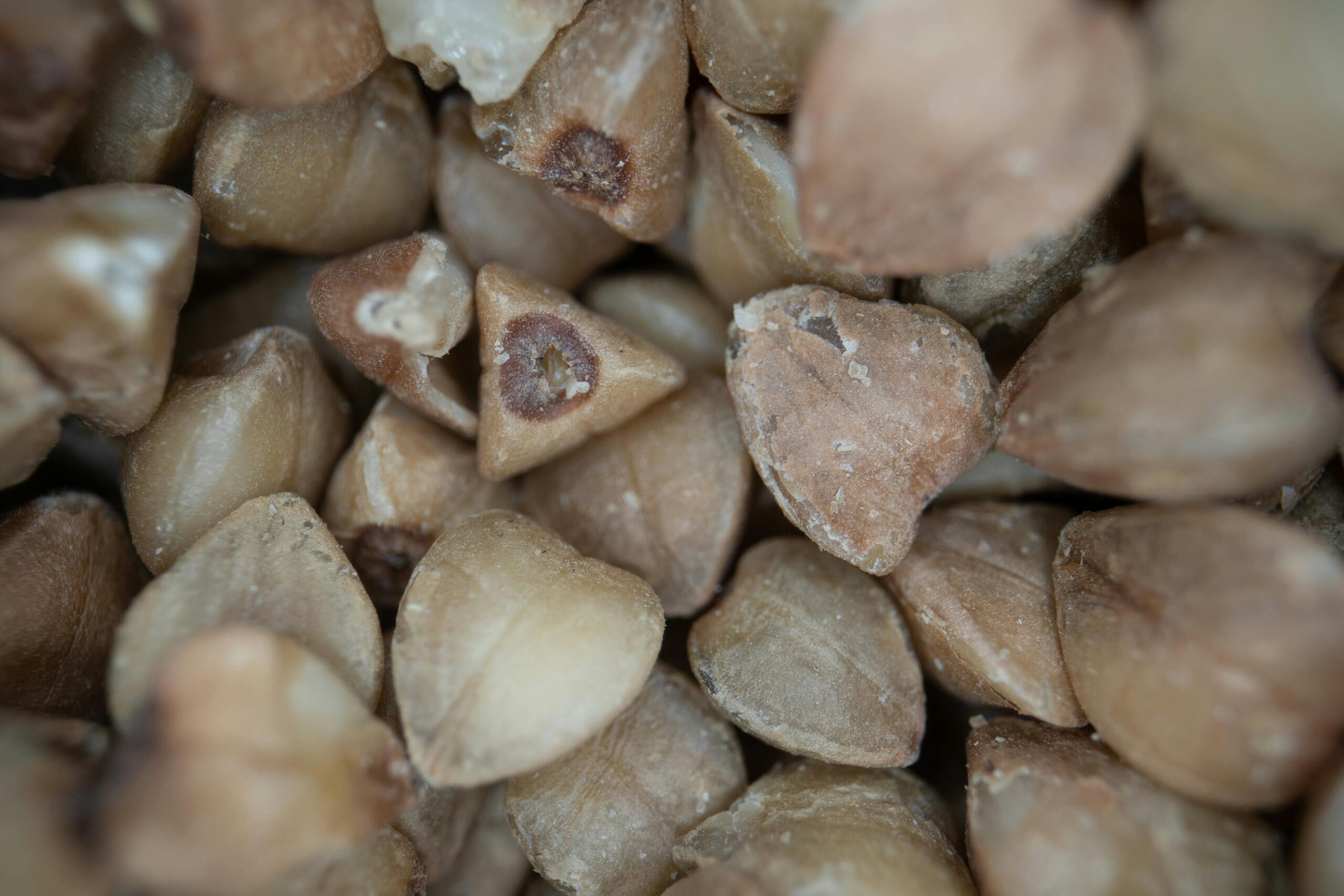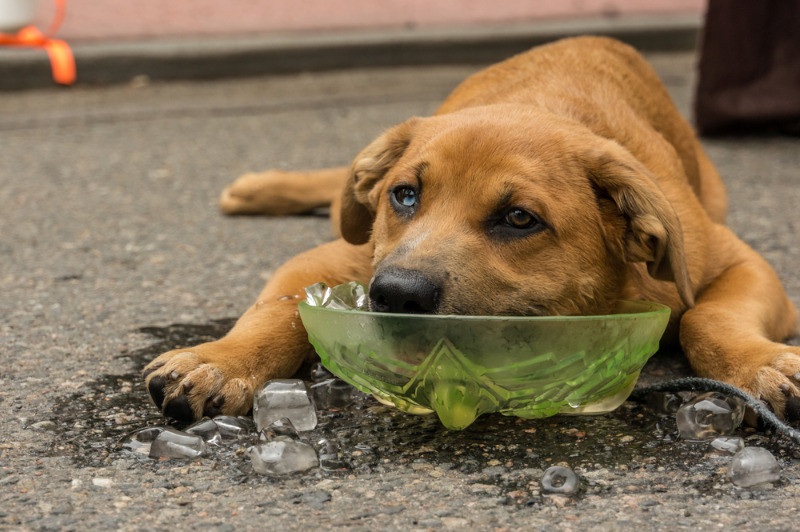Introduction to Grain-Free and Gluten-Free Dog Diets
Many dog owners are becoming more conscious of what their furry friends eat, and with good reason. Just like humans, dogs can experience food sensitivities or intolerances that affect their overall health and happiness. Grain-free and gluten-free diets have grown in popularity as potential solutions to common issues like digestive problems, itchy skin, and lackluster coats. But how do you know if your dog really needs one of these diets—or if it’s just another trend?
Let’s start by understanding what these diets actually mean. A grain-free diet eliminates ingredients like wheat, corn, rice, barley, and oats. These are often replaced with alternative carbohydrate sources such as sweet potatoes, peas, or lentils. On the other hand, a gluten-free diet specifically removes gluten-containing grains like wheat, rye, and barley. While all gluten-free diets are grain-free to some extent, not all grain-free diets are gluten-free.
Pet owners are increasingly looking for better quality nutrition, and many are discovering that their dogs thrive on specialized diets. You may have noticed pet food aisles packed with “grain-free,” “high-protein,” and “limited-ingredient” labels—it’s not just marketing hype. These diets can make a real difference for dogs with sensitivities or allergies.
What’s the Difference Between Grain-Free and Gluten-Free?
At first glance, “grain-free” and “gluten-free” may sound interchangeable, but they serve different purposes. Understanding the distinction can help you choose the right type of food for your pup.
Grain-free dog food excludes all grains—whether they contain gluten or not. This includes rice, oats, corn, and barley. Many brands use alternative carbohydrate sources like peas, lentils, or tapioca to replace these grains. Meanwhile, gluten-free food focuses only on eliminating grains that contain gluten proteins, such as wheat, rye, and barley, but may still include non-gluten grains like rice or corn.
A dog may need a grain-free diet if they struggle with digesting grains in general, while a gluten-free diet is more suitable for those specifically sensitive to gluten proteins. It’s a subtle but important distinction. For example, a dog allergic to corn or rice doesn’t necessarily need to avoid gluten, but one with a wheat allergy does.
Many pet owners assume that grain-free automatically means healthier—but that’s not always true. Dogs are omnivores, and healthy grains can be beneficial for many of them. The key is identifying what works best for your specific pet through observation, consultation, and sometimes trial and error.
Common Symptoms of Grain or Gluten Intolerance in Dogs
Spotting the signs of grain or gluten intolerance early can make a huge difference in your dog’s quality of life. These sensitivities often show up in a few key ways—especially through the skin, digestion, and energy levels.
Digestive Issues: One of the most common signs is recurring digestive trouble. If your dog frequently has diarrhea, excessive gas, bloating, or vomiting after meals, grains might be the culprit. Since the canine digestive system is different from ours, some dogs find it hard to break down the complex carbohydrates in certain grains, leading to discomfort and poor nutrient absorption.
Skin and Coat Problems: Dogs with grain or gluten intolerance often exhibit symptoms like constant itching, licking, or chewing at their paws. You might also notice dry, flaky skin or dull fur that sheds excessively. These external signs are often your first clue that something isn’t right internally.
Ear Infections and Yeast Build-Up: Chronic ear infections are another telltale sign. Yeast loves to thrive in moist environments, and when your dog’s gut health is compromised by food intolerance, yeast overgrowth can occur. If your dog is constantly shaking their head or scratching their ears, it’s time to look at their diet.
Behavioral and Energy Level Changes: Food sensitivities can even affect your dog’s mood. Some dogs become lethargic, anxious, or unusually irritable when they’re not feeling well due to digestive discomfort. If you’ve noticed sudden changes in energy or behavior, it might be connected to what they’re eating.
If any of these symptoms sound familiar, your next step should be to talk to your veterinarian about possible dietary causes.
How to Tell if Your Dog Has a Food Allergy or Sensitivity
Before you make any big changes to your dog’s diet, it’s crucial to understand whether your pet is dealing with a true food allergy or a food sensitivity. These terms often get used interchangeably, but they describe different issues with unique solutions.
A food allergy occurs when your dog’s immune system reacts abnormally to certain proteins, often found in grains or animal products like beef or chicken. This reaction triggers an immune response that leads to symptoms like itching, rashes, or chronic ear infections. Allergies can appear suddenly—even if your dog has eaten the same food for years.
In contrast, a food sensitivity doesn’t involve the immune system. Instead, it’s more of a digestive issue. Dogs with sensitivities might experience gas, bloating, diarrhea, or upset stomach after eating certain foods. The reaction might not be immediate—it can take hours or even days for symptoms to appear.
To properly diagnose the problem, your veterinarian will likely suggest an elimination diet. This involves removing potential trigger foods for a period (usually 8–12 weeks) and slowly reintroducing them one by one. During this time, you’ll monitor your dog’s symptoms closely. If their skin clears up, their digestion improves, and their energy returns, you’ve probably identified the offending ingredient.
It’s worth noting that self-diagnosing can sometimes make things worse. Many symptoms of food intolerance—like skin irritation or digestive upset—can also be signs of other health problems such as parasites, thyroid issues, or infections. That’s why it’s always best to involve a vet before switching to a new diet.
Once you have confirmation that your dog reacts poorly to grains or gluten, you can make a targeted and informed dietary change that truly supports their health.
The Health Benefits of Switching to Grain-Free or Gluten-Free Dog Food
Switching to a grain-free or gluten-free diet can lead to noticeable improvements in your dog’s overall well-being—especially if they’ve been struggling with chronic health issues related to their diet. Here’s what you might expect once you make the switch.
1. Better Digestion and Stool Quality
Dogs that have trouble digesting grains often experience loose stools, bloating, or excessive gas. By removing the hard-to-digest ingredients, many pet owners notice that their dogs have firmer, smaller stools and far less digestive discomfort. It’s a clear sign their body is processing nutrients more efficiently.
2. Healthier Skin and Shinier Coat
One of the most dramatic changes you may see after switching diets is a transformation in your dog’s skin and coat. Grain or gluten sensitivities often lead to inflammation that shows up as itchy skin, dandruff, or constant scratching. Once those irritants are gone, the skin has a chance to heal, and the coat becomes glossy and smooth again.
3. Increased Energy and Improved Mood
Just as humans feel sluggish after eating foods that don’t agree with them, dogs also experience fatigue and low energy from poor digestion or inflammation. A clean, grain-free diet allows their body to use energy more efficiently, leading to a more active, happy, and playful dog.
4. Reduced Allergic Reactions
If your dog’s allergy symptoms—like watery eyes or red skin—are tied to certain grains or gluten, switching to a diet that eliminates those triggers can offer significant relief. You’ll likely notice fewer flare-ups, fewer vet visits for skin infections, and an overall improvement in comfort.
5. Stronger Immune System and Long-Term Health
When a dog’s digestive system functions smoothly, it supports the immune system as well. A healthy gut helps absorb nutrients better, which strengthens the body’s ability to fight off illness and maintain energy. Over time, this can mean fewer health issues and a longer, happier life.
Of course, while these benefits are real, it’s important to choose a well-balanced grain-free food. Not all formulas are created equal, and some may replace grains with high amounts of legumes or starches that could cause other problems. Always read labels carefully and consult your vet for personalized advice.
Risks and Controversies Around Grain-Free Diets
As grain-free diets became popular, so did debates around their safety. You’ve probably heard about the FDA’s investigation linking certain grain-free dog foods to a heart condition called dilated cardiomyopathy (DCM). While the research is ongoing, it raised important concerns about how these diets are formulated.
1. The Link to Heart Disease
Some grain-free foods rely heavily on legumes like peas, lentils, or chickpeas as grain substitutes. These ingredients may affect how dogs process certain amino acids—especially taurine, which is vital for heart health. Some studies have suggested that low taurine levels might contribute to heart issues in dogs consuming these diets. However, the relationship isn’t fully understood, and not all grain-free foods pose this risk.
2. Nutritional Imbalances
Many grain-free or boutique dog foods are not as nutritionally complete as they appear. They might lack essential nutrients, vitamins, or minerals that your dog needs for optimal health. It’s easy to assume that “grain-free” automatically equals “premium,” but some products are more marketing than substance. Always look for food labeled as AAFCO-certified (Association of American Feed Control Officials), which ensures it meets basic nutritional standards.
3. When Grain-Free Isn’t Necessary
It’s important to note that not all dogs benefit from a grain-free or gluten-free diet. Most dogs can digest grains just fine and gain valuable nutrients from them. If your dog doesn’t show symptoms of intolerance, removing grains might actually deprive them of beneficial fiber, vitamins, and antioxidants.
The takeaway? Grain-free diets can be lifesaving for dogs with genuine sensitivities, but unnecessary for others. Before making the switch, it’s wise to talk to your veterinarian, who can evaluate your dog’s symptoms, diet history, and overall health to recommend the best option.
Identifying Quality Ingredients in Grain-Free and Gluten-Free Foods
Choosing the right grain-free or gluten-free dog food goes far beyond reading a label. With so many brands on the market, identifying a truly nutritious option can be overwhelming. Here’s how to separate the good from the gimmicks.
1. Focus on High-Quality Protein Sources
Protein should always be the first ingredient listed. Look for whole meats like chicken, beef, lamb, turkey, or fish—not vague terms like “meat meal” or “animal by-product.” For sensitive dogs, novel proteins such as duck, venison, or salmon can be gentler on the digestive system.
2. Include Healthy Carbohydrate Alternatives
Since grains are removed, good alternatives include sweet potatoes, pumpkin, peas, lentils, or chickpeas. These ingredients provide energy and essential nutrients without causing irritation. However, moderation is key—too many legumes can affect taurine levels, so balance is essential.
3. Check for Essential Fatty Acids and Nutrients
Healthy fats from sources like salmon oil or flaxseed are vital for skin and coat health. Look for added vitamins (like A, E, and D), minerals, and probiotics to support digestion and immunity.
4. Avoid Fillers and Artificial Additives
Steer clear of foods with artificial colors, preservatives, or flavorings. These unnecessary additives can trigger sensitivities and allergies. Natural preservation methods, like mixed tocopherols (vitamin E), are much safer and healthier.
5. Read Labels Carefully
Don’t fall for marketing buzzwords like “premium” or “natural.” Instead, focus on the ingredient list and guaranteed analysis. If the first few ingredients are whole foods rather than fillers, you’re on the right track.
Choosing wisely means taking the time to read, research, and consult with professionals. Your dog’s diet is the foundation of their health, and quality matters far more than trendy labels.
Transitioning Your Dog to a New Diet Safely
Switching your dog to a grain-free or gluten-free diet isn’t as simple as changing what’s in their bowl overnight. Dogs have sensitive digestive systems, and abrupt changes can cause stomach upset, vomiting, or diarrhea—even if the new food is better for them. To make the transition smooth and stress-free, you need to follow a gradual, structured approach.
1. Start Slowly and Mix Foods Gradually
Begin by mixing a small portion of the new food with your dog’s current food—typically around 25% new and 75% old food for the first two or three days. Watch how your dog reacts. If there are no signs of digestive distress, slowly increase the proportion of the new food every few days. By the end of 7–10 days, your dog should be fully transitioned to the new diet.
2. Observe Your Dog Closely During the Process
Keep an eye out for any signs of discomfort such as excessive gas, soft stools, vomiting, or lack of appetite. These may indicate that the transition is happening too quickly or that your dog’s body isn’t responding well to the new food. If symptoms persist for more than a couple of days, consult your veterinarian before continuing.
3. Support Digestive Health During the Transition
To help your dog’s system adjust, consider adding probiotics or digestive enzymes to their meals. These supplements support healthy gut bacteria and make the digestive process smoother. Fresh, filtered water should always be available, as hydration plays a huge role in digestion.
4. Stick to a Consistent Feeding Schedule
Consistency helps your dog’s digestive system adapt more easily. Feed your dog at the same times each day, and avoid giving too many new treats or table scraps during the transition. Too many changes at once can make it difficult to determine what’s causing any reactions.
5. Be Patient and Attentive
Every dog is different. Some adapt within a week, while others may take a few weeks to fully adjust. The key is to stay observant, keep notes, and communicate with your vet if anything seems off. Remember, a careful transition is worth the effort when it leads to better long-term health and comfort for your furry friend.
Homemade Grain-Free or Gluten-Free Dog Meal Options
If you’re a hands-on pet parent who loves cooking, preparing homemade grain-free or gluten-free meals can be a rewarding way to ensure your dog gets the best ingredients. However, it’s important to do it right. Dogs need a precise balance of protein, fats, vitamins, and minerals to stay healthy, and missing one essential nutrient can lead to deficiencies over time.
1. Simple and Nutritious Homemade Recipes
Here are a few meal ideas that are both grain-free and dog-approved:
- Chicken & Sweet Potato Delight: Combine cooked chicken breast, mashed sweet potatoes, and steamed carrots. Add a drizzle of fish oil for omega-3 fatty acids.
- Beef & Pumpkin Power Bowl: Mix lean ground beef, pure pumpkin, and green beans. Add a calcium source such as ground eggshell powder for bone health.
- Turkey & Quinoa Mix (Gluten-Free Option): For gluten-free rather than grain-free, use quinoa as the base. Add cooked turkey and spinach for a nutrient-packed meal.
Each of these recipes provides balanced nutrition while avoiding common irritants like wheat, corn, or soy.
2. Important Supplements to Add
Even with whole foods, dogs often need supplements to fill nutritional gaps. Essential additions may include:
- Calcium for bone strength (ground eggshells or calcium powder)
- Fish oil for skin, coat, and joint health
- Multivitamins to ensure they receive adequate levels of zinc, iron, and B vitamins
- Probiotics to support digestion
Before adding supplements, always check with your vet to confirm proper dosage based on your dog’s size, age, and breed.
3. Consult a Canine Nutritionist
Homemade diets require planning and precision. A canine nutritionist can help you design a balanced meal plan tailored to your dog’s specific needs. They’ll ensure you’re providing the right ratio of protein, fat, fiber, and micronutrients to maintain long-term health.
Making homemade meals can be an act of love, but it must be backed by knowledge and care. When done correctly, it can be one of the healthiest and most rewarding ways to feed your pet.
How to Monitor Your Dog’s Health After Switching Diets
Once your dog has fully transitioned to a grain-free or gluten-free diet, the journey doesn’t end there. You’ll need to keep track of their progress to ensure the new diet is delivering real benefits and not causing new issues.
1. Keep a Food and Symptom Diary
A food journal can be your best tool. Record what your dog eats each day, along with notes about their stool consistency, energy levels, coat appearance, and behavior. Over time, you’ll begin to see clear patterns. For example, if itching or digestive problems disappear, you’ll know the diet is working. If symptoms return, it might be a sign that another ingredient is causing trouble.
2. Regular Vet Visits and Testing
Even if your dog seems healthier, it’s a good idea to schedule regular vet check-ups. Blood tests can reveal nutritional imbalances or deficiencies that aren’t visible on the outside. Your vet can also monitor your dog’s heart health, especially if they’re on a grain-free diet, to rule out concerns like DCM (dilated cardiomyopathy).
3. Long-Term Signs of Success
When the diet is working, you’ll notice several positive changes:
- Your dog’s coat becomes shinier and softer.
- Stool is well-formed and consistent.
- Energy levels remain stable throughout the day.
- Allergic symptoms, like itching and redness, decrease or disappear.
- Breath improves due to better digestion and fewer gut issues.
If any of these benefits start to fade, it may be time to reassess the diet or consult your vet for guidance. Remember, your goal is not just short-term relief but long-term vitality and comfort for your companion.
Conclusion
Your dog’s diet plays a powerful role in their overall health and happiness. While not every dog needs a grain-free or gluten-free diet, many benefit significantly from it—especially those with allergies, sensitivities, or chronic digestive and skin problems. The key is to observe your pet carefully, work closely with your veterinarian, and choose foods made with quality, nutrient-rich ingredients.
Switching to the right diet can mean fewer vet visits, better digestion, a shinier coat, and a happier, more active pup. It’s all about listening to your dog’s signals—because their body always tells the truth, even when they can’t speak it.
Frequently Asked Questions (FAQs)
1. How do I know if my dog really needs a grain-free diet?
If your dog experiences chronic itching, digestive issues, or recurring ear infections, these may be signs of grain sensitivity. A vet can confirm this through elimination diets or allergy testing.
2. Is grain-free food automatically healthier for all dogs?
Not necessarily. While it can help dogs with sensitivities, most dogs digest grains just fine. What matters most is the quality of ingredients and overall nutritional balance.
3. Can puppies be fed grain-free or gluten-free food?
Puppies can eat grain-free diets, but only if formulated specifically for their growth stage. Always choose a puppy-specific formula approved by the AAFCO.
4. How long does it take to see improvements after switching diets?
Most dogs show noticeable improvements within 4–8 weeks. However, skin and coat changes may take longer as the body heals from previous inflammation.
5. Should I avoid all grains if my dog is sensitive to just one?
No. Some dogs may only react to a specific grain like wheat. Eliminating all grains unnecessarily can limit your dog’s nutrient intake. A targeted approach based on testing is best.
Please don’t forget to leave a review.




